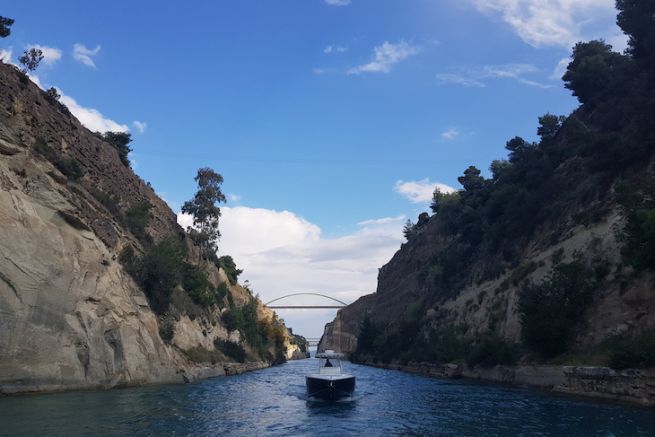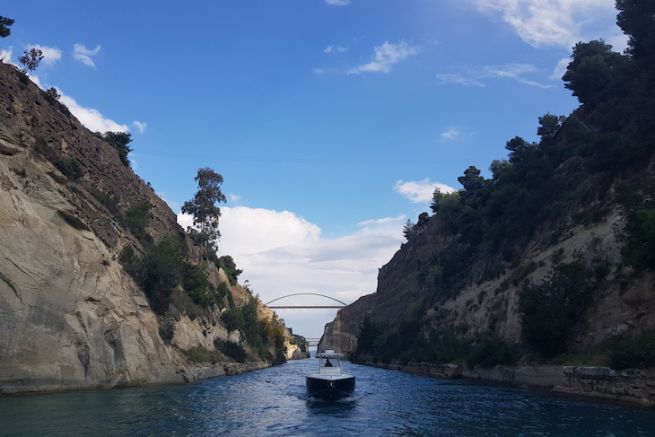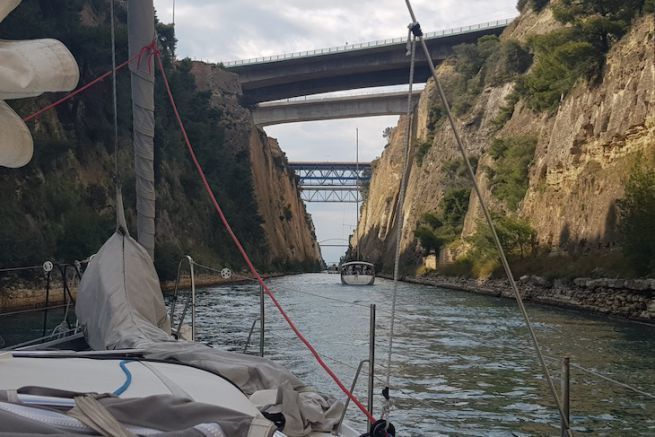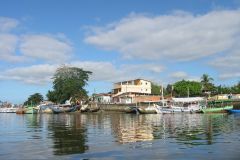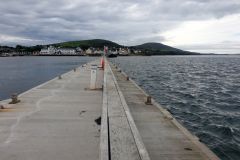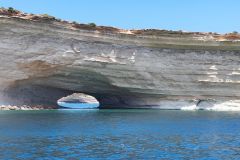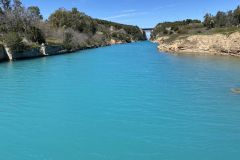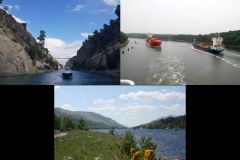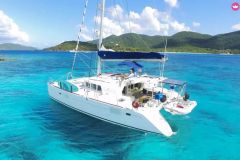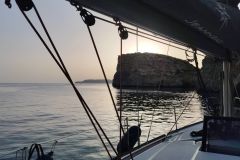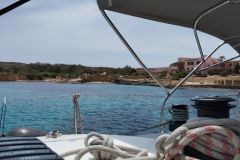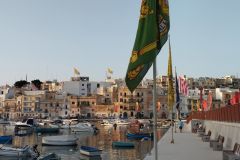To reach the Gulf of Corinth, in the Ionian Sea to the west, from the Saronic Gulf, in the Aegean Sea to the east, there are two possibilities for mariners. The first is to bypass the Peloponnese - a detour of more than 250 miles - and the second is to use the Corinth Canal, an artificial canal of 6?343 m. For our delivery from Athens to Corfu - in one week - we chose to use the famous passage, time being of the essence.
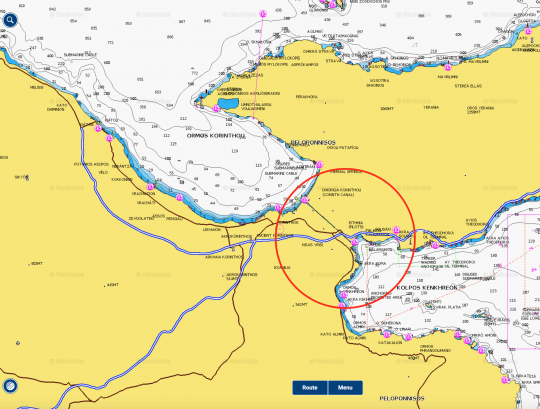
But Corinth does not open up to anyone who wants to. You will first have to complete the administrative formalities and a generous right of way with the Greek administration. Managed for several years by a private company, the management of the Canal is now government and Corinth is one of the most expensive in the world.
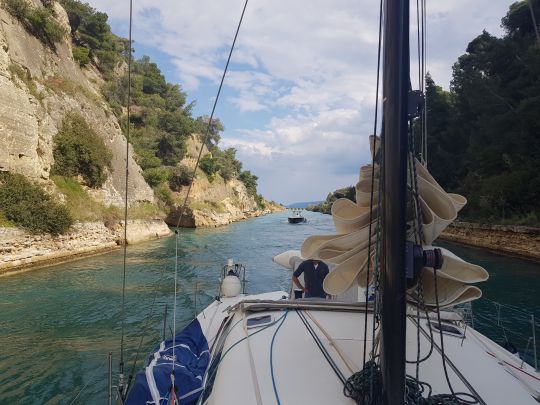
Finally, you can cross the isthmus in a narrow passage 25 m wide with a draught of 6.50 m maximum, protected by imposing limestone cliffs 79 m high. However, the air draught is limited to 52 m by the bridges that connect the two sides of the ground.
Some 10?000 boats cross the Corinth Canal every year, about 60% of them are pleasure craft and 40% are commercial vessels. Attention, 70% of the traffic takes place during the 4 months of summer with nearly 3000 boats transiting in both directions. Despite everything, regional traffic has been declining for several years, with boaters coming mainly from Turkey.
Whether you come from the west - Posidhonia - or from the east - Isthmia - the administrative formalities are done at the port office, located in the east. You must dock on the south wharf to complete the transit forms and pay the transit fee. These fees are used to maintain the canal.
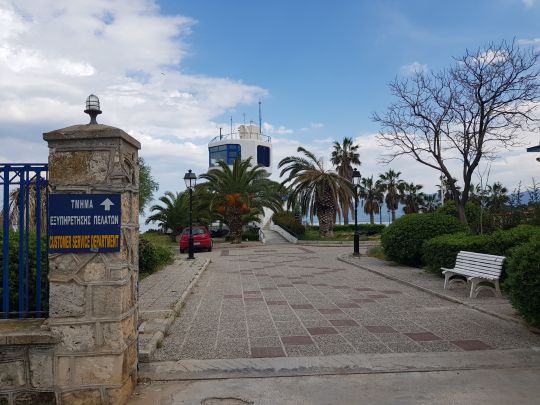
A little history
The elders used to take boats overland across the isthmus on a paved path called the Diolkos. Some parts are still visible on the north side. Octavian (future Augustus) used this passage in the naval battle of Actium, which opposed him to Mark Antony and Cleopatra in 31 BC.
At various times, Romans and Greeks drew up plans for a canal, but Nero was the only one who started work in 67. He mobilized 6,000 Jewish prisoners to carry out the work, but it was stopped when he died.
It is a French company that starts the works in 1882?; they will be completed 11 years later by the Greeks. It was damaged during the Second World War and later expanded. Today, three bridges cross the canal, two road bridges and a railway bridge.
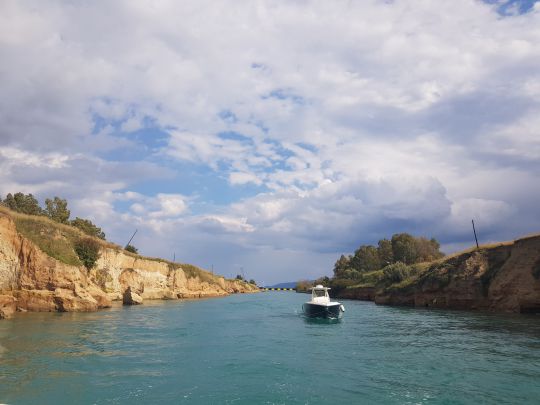
Practical information
- The canal is open every day except Thursday from 6 am to 6 pm for maintenance and dredging operations
- Dimensions: 6?343 m long - 25 m wide - draught 6.50 m - air draft 52 m
- The rate is applied on the length of the boat, the flag and the type of ship (private or charter), to which the VAT rate of 23% applies. It is necessary to count 80 euros for a ship up to 9 m, 23 euros for each additional meter up to 15 m. and 190 euros for a 12 m boat.
- The VHF channel is 11 called Isthmia Pilot
- The speed is limited to 7 knots
- Current of 1 to 3 knots which switches direction every 6 hours
- The passage is done by convoy of 3 to 4 boats.
- Payment by credit card or cash
